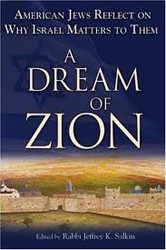In Trouble in the Tribe, Dov Waxman argues that Israeli politics and policies are a growing source of conflict within Jewish communities, and that the “voice” of the Jewish community is no longer as unified as in the past. These differences are a product of broader changes within the Jewish community and it is no longer as clear which voice is in fact dominant. Waxman reviews the evolution of the pro-Israel lobby in the United States, describes some of the key organizations within this coalition, and reports public opinion data showing the significantly higher commitment to Israel and to Israeli policies by people over the age of 30 and by more traditional Jews.
In contrast to the often strident public discourse, recent public opinion polls generally show support for Israel. However, there are sharp differences and divisions within the Jewish community over the kinds of policies needed for a sustainable peace and whether or not Israel is taking sufficient action to promote peace. The most significant cleavages are between the young and the old, and between Orthodox and non-Orthodox. The generational divide is especially concerning. For example, only one in four young people (age 18 to 29) thought that “…the current Israeli government is making a sincere effort to bring about a peace settlement with the Palestinians…” in 2013. By contrast, 43% of people over the age of 50 agreed with this statement.
Waxman recognizes that the divisions he describes are not entirely new. It is also possible to envision them as posing important educational challenges targeted toward young people and the unaffiliated rather than assuming that growing opposition to Israel in the future is inevitable. In fact, efforts are underway to more effectively deploy educational and public relations methods to improve the public image of Israel and, in particular, to counteract anti-Israel and possibly anti-Semitic information and rhetoric.
Although the focus of the book is on the internal politics of the Jewish community, a discussion of the Boycott, Divestment and Sanctions (BDS) movement would have been instructive. Confined to a footnote is a brief mention of the prevalence of anti-Israel sentiment on many college campuses including the occurrence of “apartheid weeks.” These efforts have been most evident on college campuses but the BDS movement has a broader reach, including the Presbyterian church which voted in June 2014 to divest its holdings in three corporations to pressure Israel. Some BDS sympathizers are themselves Jewish. In his closing chapter, Waxman points out that he took pains to be unbiased. However, his use of capital letters to describe the “Occupation” and the “Occupied Territories” are suggestive of his personal views.
While Israel is no longer the struggling nation depicted in Leon Uris’s book Exodus — a land of Milk and Honey — but an economically advanced “start up nation,” it is indeed difficult for affiliated Jews and for growing numbers of Israelis to be hopeful about the long-term prospects for peace and a two-state solution in the midst of a volatile region. In the late summer of 2015, when this book was nearing completion, Israelis began to be victimized by lone terrorists using automobiles, knives, and other stealth methods. One wonders, in the face of these events, and the Gaza war the previous summer, if the Pew survey data cited in this book, which were collected in 2013, represent current opinions. Waxman has done a careful and thoughtful job of summarizing growing divisions within the Jewish community but the world situation is very much in flux, which poses important challenges to scholarly research.
Related Content:





